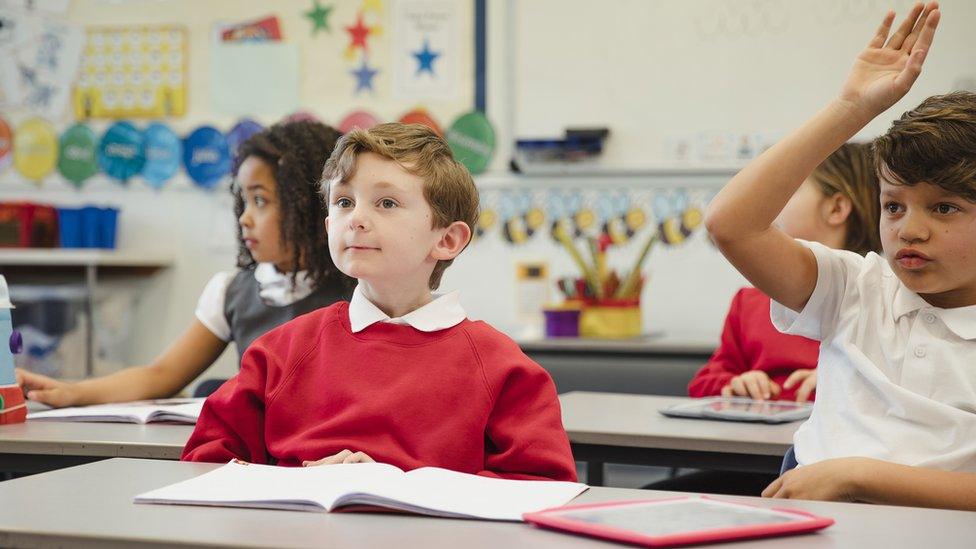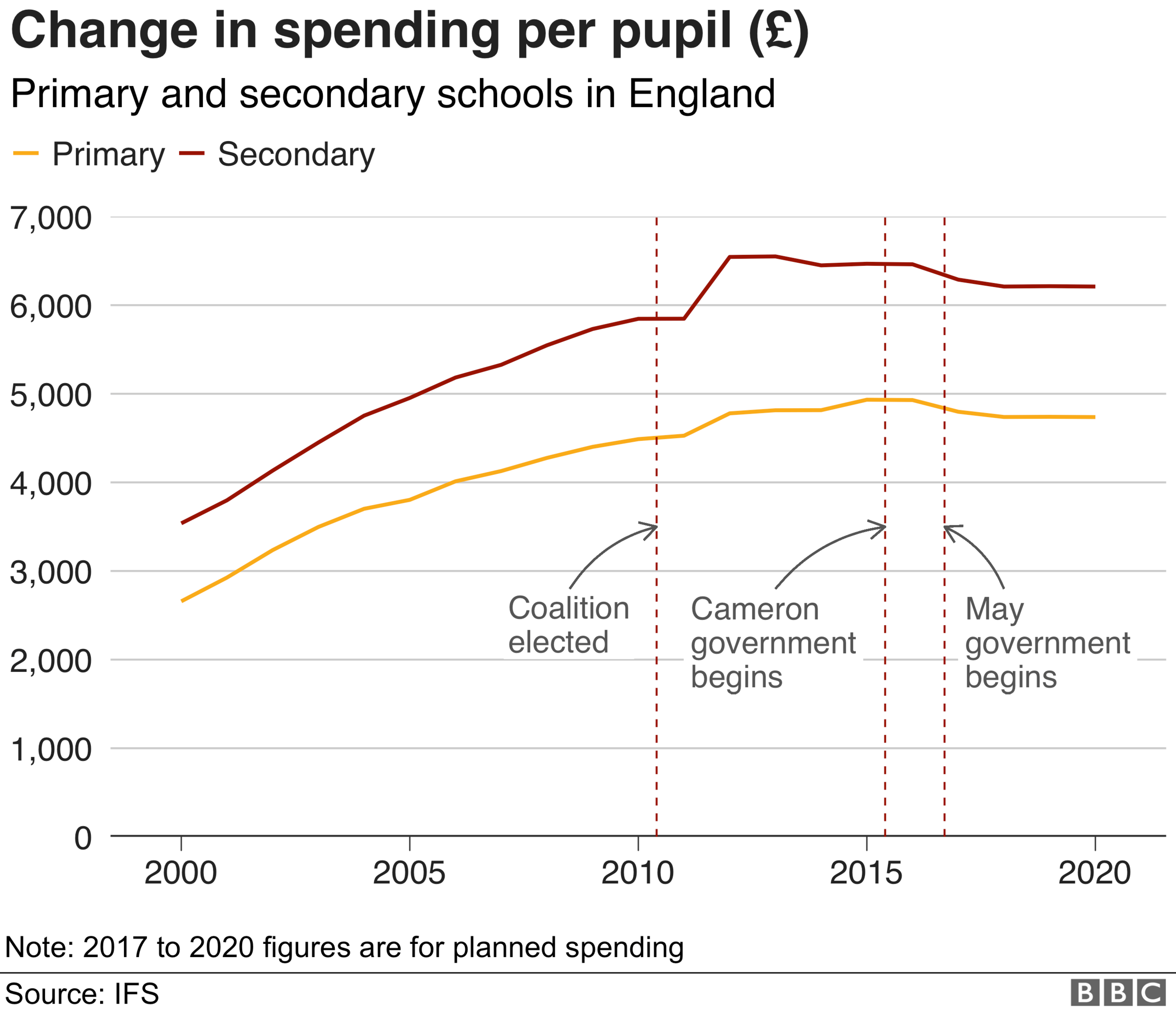School funding: Is the government spending record amounts?
- Published

Serious concerns have been raised over the Department for Education misrepresenting statistics to make England's schools' performance and funding appear better than they are.
The schools minister Nick Gibb claimed that more money than ever is being put into England's schools - something Prime Minister Theresa May has also repeatedly claimed.
So why doesn't this claim the government keeps making stack up?
It's right to say there's more cash going in than before. About £43.5bn is planned to be spent on pupils aged 0-16 in 2018-19, compared with about £30.5bn in 2010-11, when the Conservatives came into power in coalition.
But - and we've said it before - that's not the whole story.
Looking just at how many pounds and pence are being pledged doesn't tell you much on its own.
To make that number meaningful, you have to compare it with how much it costs to run a school and how that's changed over time.
That includes looking at inflation - how much the cost of things and services have gone up in general across an economy (including wages for staff and employer contributions to pensions and National Insurance).
And we also have to look at how many pupils need to be taught.
Pupil numbers have been rising following a baby boom in the early 2000s.
The average primary school has 42 more pupils than in 2009, according to the Department for Education. This "population bulge" is moving up through the school system and beginning to hit secondary schools.
So what we really want to look at is how much is being spent per pupil, once you've factored in rising costs (that is, in "real terms").
Independent think tank the Institute for Fiscal Studies (IFS) says that between 2009-10 and 2017-18, school funding decreased 8% in real terms.
Then, last year, the government pledged a £1.3bn cash injection amounting to a 3% increase in spending per pupil.
But when you account for inflation, it's "equivalent to a real-terms freeze", according to the IFS.

The chair of the UK Statistics Authority, Sir David Norgrove, said, external the Department for Education had misrepresented changes to school funding by not adjusting for per-pupil spend.
"The UK Statistics Authority has had cause to publicly write to the Department with concerns on four occasions in the past year. I regret that the department does not yet appear to have resolved issues with its use of statistics," he said.
He added the figures were "presented in such a way as to misrepresent changes in school funding...The result was to give a more favourable picture."
The education secretary Damian Hinds pointed again to the rising amounts being spent, adding: "Of course, I recognise that pupil numbers are rising, we are asking schools to do more and schools are facing cost pressures".
Sir David also criticised the department for claiming the UK is the third highest spender on education per pupil in the OECD - a group of 36 economically developed nations.
This is true if you look across the education landscape, including universities. But it is skewed by England's far higher than average tuition fees - paid by individuals, not by the state.
Looking at secondary education only, the UK comes in at 15th place - about the middle of the pack. For primary school spending the UK is sixth.
And looking only at public spending on education, as a proportion of the total size of a country's economy, the UK is in 12th place.
But if you look at the longer-term picture, schools in England are much better funded than they were 20 years ago.
Until 2010, England's school budgets had been increasing steadily, with particularly steep increases in spending between 1997 and 2007.


